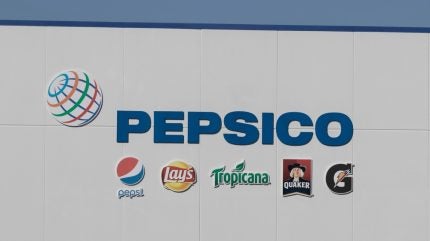
PepsiCo is seeking to enhance productivity by “integrating” its two-largest businesses in North America, snacks and drinks.
That was one of the key messages to emerge from chairman and CEO Ramon Laguarta’s second-quarter results presentation yesterday (17 July) as he outlined an expected “sequential improvement” in group revenue and market share through the rest of the 2025 financial year.

Discover B2B Marketing That Performs
Combine business intelligence and editorial excellence to reach engaged professionals across 36 leading media platforms.
“One North America will modernise our company and improve our agility and marketplace competitiveness over time,” Laguarta said in his prepared remarks.
Laguarta implied the integration will include PepsiCo’s Frito-Lay North America reporting and operating division, along with PepsiCo Beverages North America (PBNA), each with revenues in 2024 of $24.8bn and $27.8bn, respectively.
It was not clear if Quaker Foods North America, which posted sales last year of $2.7bn, will also feature in the amalgamation but it seems likely judging by the CEO’s follow-up comments to analysts’ questions.
“When it comes to the North America market, we have one new layer of opportunity that is going to give us a lot of opportunities to improve our cost structure over the next three, four years, which is the North America integration.

US Tariffs are shifting - will you react or anticipate?
Don’t let policy changes catch you off guard. Stay proactive with real-time data and expert analysis.
By GlobalData“We have two large businesses, almost $30 billion each that have been operating almost a full value chain side by side. Now, with the investments we’ve made in technology, with the new data that we have in systems, we’re going to start looking at those businesses in a more integrated way to perform some of the value chain tasks in an integrated way.”
Laguarta highlights synergies
The finer details of the workings of that plan have yet to emerge – whether PepsiCo will consolidate its North America business units into one standalone division or still have separate reporting divisions.
Integration would “create both efficiency and cost reduction, but also growth opportunities for the business in a combined way”, Laguarta added.
He used another adjective, “synergise”, in terms of “two large operating businesses that are sitting side-by-side servicing the same geographies, the same customers and then the same consumers”.
Laguarta explained further: “That, for us, is a huge idea to optimise how we do most of the task in our value chain, how we do this at low cost and a better performance.
“This will be our priority and where we will focus our efforts for the next three, four years to capture value and come out of this as a lower-cost business and better-performing business.”
The PepsiCo chief also outlined historical and ongoing efforts to boost productivity “enabled by automation, standardisation, and increased use of digital tools and data analytics”, which, Laguarta said, “will provide continuous, ongoing support for our necessary operational investments and commercial activities”. They also include AI.
Savings from those productivity initiatives will be “used primarily to invest in capabilities that accelerate growth and improve profitability”, he said.
PepsiCo’s international division (40% of the 2024 group revenue of $91.8bn) was outlined as a key driver of revenue growth at the first-quarter results stage in April, and that remains the case. But foodservice is also now seen as a major growth opportunity, with innovation at the heart of both the out-of-home and retail push.
Laguarta slipped in the planned “big push” into protein beverages, with no “artificials”, to complement its no-sugar and functional drinks. And also so-called permissible snacks in the health space, including simple ingredient Frito-Lay and Tostitos brands that too will have no “artificials”.
The protein-drinks launch is slated for the final quarter or into the first three months of the next fiscal year, Laguarta suggested, adding: “We will be participating in the liquid-protein space with, I think, superior propositions that have no artificials, that are great tasting, and that I think will give us the return on what is clearly a consumer trend that is scaling up in the US and it’s part of the repertoire of our consumers”.
Finance chief Jamie Caulfield said PepsiCo expects to deliver 70% more productivity savings in the second half than in the first six months across the group, much of which will be centred on Frito Lay because of the “need to right-size the assets and some of the other fixed costs”.
“We’re pushing on every cost lever that is available and that’s what’s going to drive the incremental productivity in the second half,” Caulfield said.





